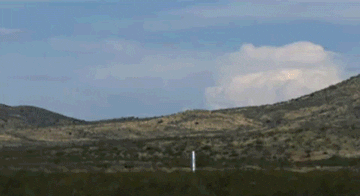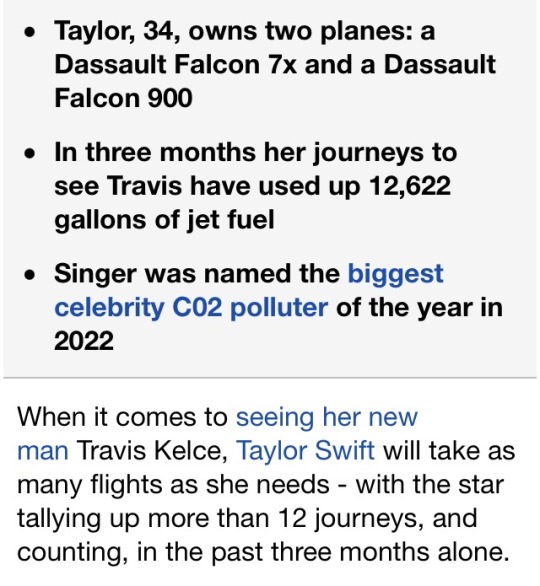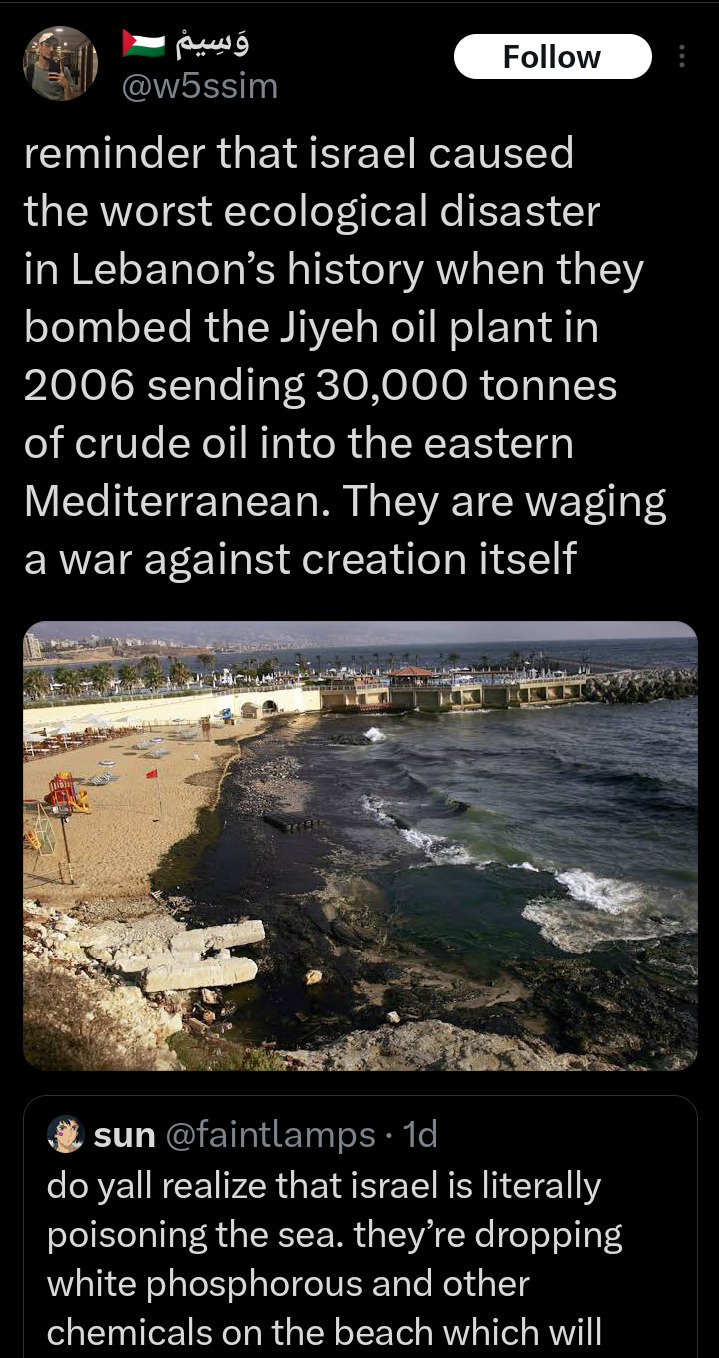#climate crisis
Text
Hey, happy Earth Day! Who wants to talk about climate change?
Yeah, okay, fair, I kinda figured the answer to that would be "ugh do we have to?" What if I told you I have good news though? Good news with caveats, but still good news.
What if I told you that since the Paris Agreement in 2015, we've avoided a whole degree celsius of global warming by 2100, or maybe more?

Current projections are 2.7C, which is way better than the 3-5C (with a median of 3.7C) we were expecting in 2015. It's not where we want to be - 1.5C - but it is big, noticeable progress!
And it's not like we either hit 1.5C and avoid all the big scary consequences or fail to hit 1.5C and get all of them - every tenth of a degree of warming we avoid is going to prevent more severe problems like extreme weather, sea level rise, etc.
This means that climate change mitigation efforts are having a noticeable impact! This means a dramatically better, safer future - and if we keep pushing, we could lower the amount of global warming we end up with even further. This is huge progress, and we need to celebrate it, even though the fight isn't over.
It's working. Keep going.
#hylian rambles#climate change#climate crisis#environmental issues#global warming#hope#hope for the future#hope for the planet#earth day
4K notes
·
View notes
Text
Since the 1960s, the world has seen a spike in the number of natural disasters, largely due to rising sea levels and an ever gradually increasing global surface temperature.
The good news? We’re getting better at helping each other when disasters strike.
According to a recent study from Our World In Data, the global toll from natural disasters has dramatically dropped in the last century.
“Low-frequency, high-impact events such as earthquakes and tsunamis are not preventable, but such high losses of human life are,” wrote lead authors Hannah Ritchie and Pablo Rosado.
To conduct their research, Ritchie and Rosado gathered data from all geophysical, meteorological, and climate-related disasters since 1900. That includes earthquakes, volcanic activity, landslides, drought, wildfires, severe storms, and mass floods.
In the early-to-mid 20th century, the average annual death toll from disasters was very high, often climbing to over a million.
For example, the study cites that in 1931, 2.7 million people died from the Yangtze–Huai River floods. In 1943, 1.9 million died from the Bangladeshi famine of 1943. Even low-frequency events had extreme death tolls.
“In recent decades we have seen a substantial decline in deaths,” Ritchie and Rosado observed. “Even in peak years with high-impact events, the death toll has not exceeded 500,000 since the mid-1960s.”
Why has the global death toll from disasters dropped?
There are a number of factors at play in the improvement of disaster aid, but the leading component is that human beings are getting better at predicting and preparing for natural disasters.
“We know from historical data that the world has seen a significant reduction in disaster deaths through earlier prediction, more resilient infrastructure, emergency preparedness, and response systems,” Ritchie and Rosado explained in their study.
On April 6, [2024],a 7.2 magnitude earthquake rocked the city of Hualien in Taiwan. Days later, as search and rescue continues, the death toll currently rests at 16.
Experts have praised Taiwan for their speedy response and recovery, and attributed the low death toll to the measures that Taiwan implemented after an earthquake of similar strength hit the city 25 years earlier. Sadly, on that day in 1999, 2,400 people died and 11,000 were injured.
In an interview with Al Jazeera, Wang Yu — assistant professor at National Taiwan University — said that event, known as the Chi-Chi earthquake, revolutionized the way Taiwan approached natural disasters.
“There were lots of lessons we learned, including the improvement of building codes, understanding earthquake warning signs, the development and implementation of earthquake early warning (EEW) systems and earthquake education,” said Wang.
Those same sensors and monitoring systems allowed authorities to create “shakemaps” during Hualien’s latest earthquake, which helped them direct rescue teams to the regions that were hit the hardest.
This, in conjunction with stronger building codes, regular earthquake drills, and public education campaigns, played a huge role in reducing the number of deaths from the event.
And Taiwan’s safeguards on April 6 are just one example of recent measures against disasters. Similar models in strengthening prediction, preparedness, and recovery time have been employed around the world when it comes to rescuing victims of floods, wildfires, tornados, and so on.
What else can we learn from this study?
When concluding the findings from their study, Ritchie and Rosado emphasized the importance of increasing safety measures for everyone.
Currently, there is still a divide between populations with high gross national income and populations living in extreme poverty.
Even low-income countries that infrequently have natural disasters have a much higher death rate because they are vulnerable to collapse, displacement, and disrepair.
“Those at low incomes are often the most vulnerable to disaster events; improving living standards, infrastructure, and response systems in these regions will be key to preventing deaths from natural disasters in the coming decades,” surmised Ritchie and Rosado.
“Overall development, poverty alleviation, and knowledge-sharing of how to increase resilience to natural disasters will therefore be key to reducing the toll of disasters in the decades to come."
-via GoodGoodGood, April 11, 2024
#good news#hope#climate change#hope posting#climate news#climate crisis#climate anxiety#climate emergency#natural disasters#disasters#earthquake#wildfire#hurricane#cw death#taiwan#tsunamis#building construction#climate action#climate hope
320 notes
·
View notes
Text

#never trump#republican assholes#climate change#ecology#environment#green jobs#sustainability#corporate greed#maga morons#climate crisis#climate activism#climate deniers
236 notes
·
View notes
Text


#politics#democrats#Climate change#climate crisis#Global war#Gop#hill#hillary clinton#trump#donald trump#Carbon emissions
150 notes
·
View notes
Text
f it, time to be depressed about the results of this poll (free blocklist ig)
REBLOG FOR SAMPLE SIZE!! LETS GET AS MANY PEOPLE AS POSSIBLE!!
#climate#climate change#climate crisis#enviroment#enviromental#environmentalism#global warming#poll#polls#tumblr#hellsite#hellsite (derogatory)#please#dont be an idiot#think
250 notes
·
View notes
Text

A.2.4 Are anarchists in favour of “absolute” liberty?
No. Anarchists do not believe that everyone should be able to “do whatever they like,” because some actions invariably involve the denial of the liberty of others.
For example, anarchists do not support the “freedom” to rape, to exploit, or to coerce others. Neither do we tolerate authority. On the contrary, since authority is a threat to liberty, equality, and solidarity (not to mention human dignity), anarchists recognise the need to resist and overthrow it.
The exercise of authority is not freedom. No one has a “right” to rule others. As Malatesta points out, anarchism supports “freedom for everybody … with the only limit of the equal freedom for others; which does not mean … that we recognise, and wish to respect, the ‘freedom’ to exploit, to oppress, to command, which is oppression and certainly not freedom.” [Errico Malatesta: His Life and Ideas, p. 53]
In a capitalist society, resistance to all forms of hierarchical authority is the mark of a free person — be it private (the boss) or public (the state). As Henry David Thoreau pointed out in his essay on “Civil Disobedience” (1847)
“Disobedience is the true foundation of liberty. The obedient must be slaves.”
#faq#anarchy faq#revolution#anarchism#daily posts#communism#anti capitalist#anti capitalism#late stage capitalism#organization#grassroots#grass roots#anarchists#libraries#leftism#social issues#economy#economics#climate change#climate crisis#climate#ecology#anarchy works#environmentalism#environment#solarpunk#anti colonialism#mutual aid#cops#police
72 notes
·
View notes
Text
(lot of big frog wins)
For the first time in five years, northern corroboree frogs have been spotted in Namadgi National Park by ACT government ecologists.
The species is listed as critically endangered and the government has been attempting to restore their population in the park for more than a decade.
Ecologists have been releasing frogs and eggs into the park as part of a breeding program, but they had not been spotted in the wild since 2019.
This year, 16 male frogs were identified at the Ginini Flats Wetlands site and a further 21 frogs were counted at a lower elevation site in the park. "Having not seen these frogs in the wild since 2019, we were beginning to think all hope was lost, and that the species was close to extinction," Environment Minister Rebecca Vassarotti said.
She told ABC Radio Canberra the frogs were under pressure due to many issues including climate change, habitat loss and the invasive chytrid fungus.
That deadly fungus affects the frogs' skin and stops them from being able to take in water and important salts.
Ms Vassarotti said ecologists had been experimenting with the breeding program and releasing frogs in different areas to see if they could make a difference.
"We've been ... releasing eggs in some other areas in Namadgi, where they hadn't previously been seen," she explained.
"These were at slightly lower elevations. And the reason we were doing that is that they were elevations where there wasn't such an impact of this awful fungus."Ms Vassarotti said this was an "exciting" development but acknowledged there was more work to be done through the breeding program.
"Australia is the extinction capital of the world," Ms Vassarotti said in a statement.
"Way too often, climate change and human impact on the environment has resulted in us losing unique species permanently as they become extinct.
"I've been heartbroken to have to continue to list species as close to extinction.
"The identification of new northern corroboree frogs across a range of sites restores my confidence that we can save this incredible frog that is so unique to our region."
#good news#frogs#environmentalism#science#environment#nature#animals#australia#endangered species#conservation#climate change#climate crisis#parks
53 notes
·
View notes
Text

Imagining Worlds After Climate Disaster, Julie Heffernan Melds Chaos and the Sublime
40 notes
·
View notes
Text
About Blowing Up Pipelines

A while ago I saw a post about fossil fuels, under which someone posted: "What are you waiting for? Let's blow up the pipelines!" Which is very fair. But someone else came to post under it: "No! Think of the environmental harm! You need to go vote!"
And, let's be honest here: It is very likely that neither of them have actually read the book that the "blow up a pipeline" wording comes from. How to Blow up a Pipeline by Andreas Malm. Which in its core argues that sabotage is good, because voting doesn't do shit.
Now, don't get me wrong. There is a ton of important elections coming up - especially in the US, but soon in Germany as well. And you need to go vote to prevent another Trump presedency! However: There is nobody you can vote for, who will actually stop pipelines from being build, who will actually limit the size of cars folks drive, and who will actually put pressure on natural gas, coal and what not. Heck, even in the best case that on a local level there might be some who want to build out bike lanes and public transport... Those changes often take too long to bring them through during one term and if someone else is in charge next term, chances are, the projects will be cancelled.
So, basically what Malm argues in his book: Voting will not change those things, partly because of lobbyism. Protests will be ignored, partly because politicians care more about the lobbyists. Same goes with petitions. So, the usual ways that technically a democracy will leave for people to engage and influence politics do not work.
But, so Malm says, sabotage does.
Now, he does actually not directly argue for literally blowing up pipelines. But he is arguing for sabotage. He notes: "If just a few people with their keys run through a city during the night and scratch up all the SUVs, a lot fewer people will on the long term use SUVs." He even talks about something like this that he participated in in Sweden and what effects it had.
And yes, he does give ideas of how to deal with pipelines in ways that will do a lot of financial damage, which makes pipelines and hence fossil fuels a lot less attractive to energy providers. Because they are going to need to pay for all that damage.
Even with smaller sabotage... yes, there will be some environmental damage. But try to think of it this way: If enough folks do this, if there is enough damage done on the pipelines (and other forms of creating and transporting fossil fuels), then less of them will be build, will be used. And given that those pipelines and other fossil fuels will leak into the environment either way, and over time will do a lot more damage than a few cases of sabotage will do.
And I really gotta say: Yeah, no, I do agree with Malm. On all the fronts.
So, please... The book is actually super short. Just go an read it, alright?
#environmentalism#environment#pollution#fossil fuels#climate crisis#going green#how to blow up a pipeline#andreas malm#solarpunk#lunarpunk#anarchism
20 notes
·
View notes
Text
#thanks joe#vote blue#vote democrat#vote biden#climate action#democrats#environmental protection#vote blue 2024#young voters#democracy#social democracy#climate change#democratic socialism#democrats now socialism later#climate crisis#vote blue to save democracy#green new deal
20 notes
·
View notes
Text

"No climate justice on occupied land"
#feminist#social justice#free palestine#settler violence#settler colonialism#genocide#climate justice#climate action#climate crisis#climate change#greta thunberg#europe#politics#the hague#netherlands#global news
25K notes
·
View notes
Text









imagine being that fucking rich and that fucking careless.
#anti taylor swift#taylor swift is a climate criminal#taypollution#carbon emissions#co2#the goth punk billionaire#climate change#climate crisis
36K notes
·
View notes
Text
No paywall version here.
"Two and a half years ago, when I was asked to help write the most authoritative report on climate change in the United States, I hesitated...
In the end, I said yes, but reluctantly. Frankly, I was sick of admonishing people about how bad things could get. Scientists have raised the alarm over and over again, and still the temperature rises. Extreme events like heat waves, floods and droughts are becoming more severe and frequent, exactly as we predicted they would. We were proved right. It didn’t seem to matter.
Our report, which was released on Tuesday, contains more dire warnings. There are plenty of new reasons for despair. Thanks to recent scientific advances, we can now link climate change to specific extreme weather disasters, and we have a better understanding of how the feedback loops in the climate system can make warming even worse. We can also now more confidently forecast catastrophic outcomes if global emissions continue on their current trajectory.
But to me, the most surprising new finding in the Fifth National Climate Assessment is this: There has been genuine progress, too.
I’m used to mind-boggling numbers, and there are many of them in this report. Human beings have put about 1.6 trillion tons of carbon in the atmosphere since the Industrial Revolution — more than the weight of every living thing on Earth combined. But as we wrote the report, I learned other, even more mind-boggling numbers. In the last decade, the cost of wind energy has declined by 70 percent and solar has declined 90 percent. Renewables now make up 80 percent of new electricity generation capacity. Our country’s greenhouse gas emissions are falling, even as our G.D.P. and population grow.
In the report, we were tasked with projecting future climate change. We showed what the United States would look like if the world warms by 2 degrees Celsius. It wasn’t a pretty picture: more heat waves, more uncomfortably hot nights, more downpours, more droughts. If greenhouse emissions continue to rise, we could reach that point in the next couple of decades. If they fall a little, maybe we can stave it off until the middle of the century. But our findings also offered a glimmer of hope: If emissions fall dramatically, as the report suggested they could, we may never reach 2 degrees Celsius at all.
For the first time in my career, I felt something strange: optimism.
And that simple realization was enough to convince me that releasing yet another climate report was worthwhile.
Something has changed in the United States, and not just the climate. State, local and tribal governments all around the country have begun to take action. Some politicians now actually campaign on climate change, instead of ignoring or lying about it. Congress passed federal climate legislation — something I’d long regarded as impossible — in 2022 as we turned in the first draft.
[Note: She's talking about the Inflation Reduction Act and the Infrastructure Act, which despite the names were the two biggest climate packages passed in US history. And their passage in mid 2022 was a big turning point: that's when, for the first time in decades, a lot of scientists started looking at the numbers - esp the ones that would come from the IRA's funding - and said "Wait, holy shit, we have an actual chance."]
And while the report stresses the urgency of limiting warming to prevent terrible risks, it has a new message, too: We can do this. We now know how to make the dramatic emissions cuts we’d need to limit warming, and it’s very possible to do this in a way that’s sustainable, healthy and fair.
The conversation has moved on, and the role of scientists has changed. We’re not just warning of danger anymore. We’re showing the way to safety.
I was wrong about those previous reports: They did matter, after all. While climate scientists were warning the world of disaster, a small army of scientists, engineers, policymakers and others were getting to work. These first responders have helped move us toward our climate goals. Our warnings did their job.
To limit global warming, we need many more people to get on board... We need to reach those who haven’t yet been moved by our warnings. I’m not talking about the fossil fuel industry here; nor do I particularly care about winning over the small but noisy group of committed climate deniers. But I believe we can reach the many people whose eyes glaze over when they hear yet another dire warning or see another report like the one we just published.
The reason is that now, we have a better story to tell. The evidence is clear: Responding to climate change will not only create a better world for our children and grandchildren, but it will also make the world better for us right now.
Eliminating the sources of greenhouse gas emissions will make our air and water cleaner, our economy stronger and our quality of life better. It could save hundreds of thousands or even millions of lives across the country through air quality benefits alone. Using land more wisely can both limit climate change and protect biodiversity. Climate change most strongly affects communities that get a raw deal in our society: people with low incomes, people of color, children and the elderly. And climate action can be an opportunity to redress legacies of racism, neglect and injustice.
I could still tell you scary stories about a future ravaged by climate change, and they’d be true, at least on the trajectory we’re currently on. But it’s also true that we have a once-in-human-history chance not only to prevent the worst effects but also to make the world better right now. It would be a shame to squander this opportunity. So I don’t just want to talk about the problems anymore. I want to talk about the solutions. Consider this your last warning from me."
-via New York Times. Opinion essay by leading climate scientist Kate Marvel. November 18, 2023.
#WE CAN DO THIS#I SO TRULY BELIEVE THAT WE CAN DO THIS#WE CAN SAVE OURSELVES AND THE WORLD ALONG WITH US#climate crisis#united states#climate change#conservation#hope posting#sustainability#climate news#climate action#climate emergency#fossil fuels#global warming#environmentalism#climate hope#solarpunk#climate optimism#climate policy#earth#science#climate science#meteorology#extreme weather#renewable energy#solar power#wind power#renewables#carbon emissions#climate justice
33K notes
·
View notes
Text




41K notes
·
View notes
Text
We need everyone's help right now to protect the rainforest and Indigenous People
The Amazon Rainforest is under a massive threat. I know you've heard this a million times, but this is different. There is a piece of legislation that will decimate the rights of Indigenous people of Brazil, who have been protecting the rainforest. It's unfathomably bad. It has majority support. And they're voting tomorrow.
As reported here, the Bill allows "the Brazilian government to find energy resources, set up military bases, develop strategic roads, and implement commercial agriculture on protected Indigenous tribal lands, without any prior discussion with the affected peoples."
The thing you can do—and I know this sounds overly simple—is sign this petition—and tell your friends to do the same: SIGN HERE.
As reported here, the Bill allows "the Brazilian government to find energy resources, set up military bases, develop strategic roads, and implement commercial agriculture on protected Indigenous tribal lands, without any prior discussion with the affected peoples."
Again, this bill has majority support. You may be wondering, why will a petition signed by people who don't live in Brazil make any difference? Because it will give those opposing it political air cover. It will show the world is with them.
But we need a LOT of signatures.
Please do this simple act and spread the word.
51K notes
·
View notes
Text
REBLOG THIS TO TELL CLIMATE CHANGE DENIERS TO GET THE HECK OFF YOUR BLOG
#reblog#chain post#not forced#hellsite#climate#climate justice#climate crisis#climate change#climate action
139 notes
·
View notes